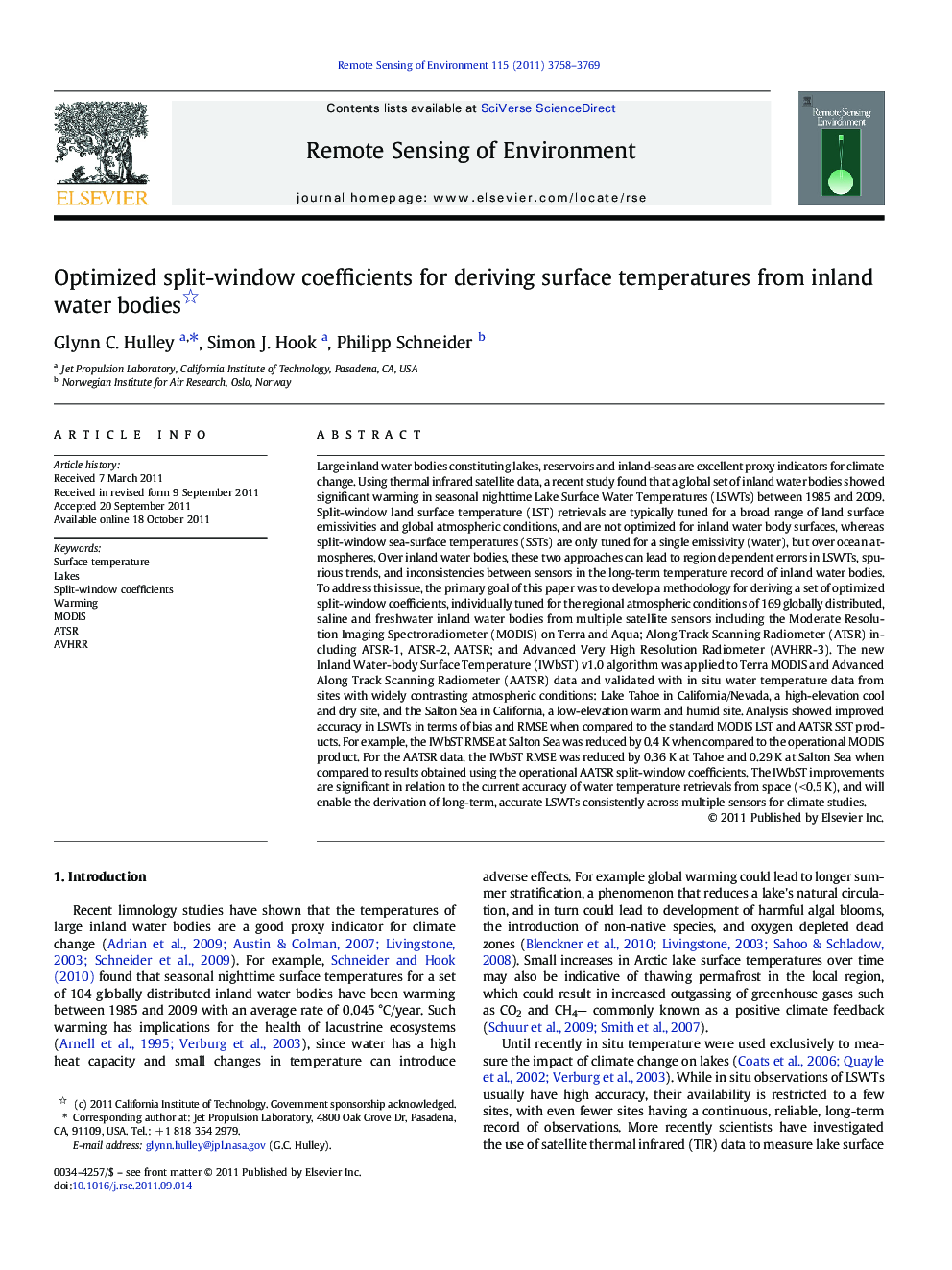| Article ID | Journal | Published Year | Pages | File Type |
|---|---|---|---|---|
| 4459516 | Remote Sensing of Environment | 2011 | 12 Pages |
Large inland water bodies constituting lakes, reservoirs and inland-seas are excellent proxy indicators for climate change. Using thermal infrared satellite data, a recent study found that a global set of inland water bodies showed significant warming in seasonal nighttime Lake Surface Water Temperatures (LSWTs) between 1985 and 2009. Split-window land surface temperature (LST) retrievals are typically tuned for a broad range of land surface emissivities and global atmospheric conditions, and are not optimized for inland water body surfaces, whereas split-window sea-surface temperatures (SSTs) are only tuned for a single emissivity (water), but over ocean atmospheres. Over inland water bodies, these two approaches can lead to region dependent errors in LSWTs, spurious trends, and inconsistencies between sensors in the long-term temperature record of inland water bodies. To address this issue, the primary goal of this paper was to develop a methodology for deriving a set of optimized split-window coefficients, individually tuned for the regional atmospheric conditions of 169 globally distributed, saline and freshwater inland water bodies from multiple satellite sensors including the Moderate Resolution Imaging Spectroradiometer (MODIS) on Terra and Aqua; Along Track Scanning Radiometer (ATSR) including ATSR-1, ATSR-2, AATSR; and Advanced Very High Resolution Radiometer (AVHRR-3). The new Inland Water-body Surface Temperature (IWbST) v1.0 algorithm was applied to Terra MODIS and Advanced Along Track Scanning Radiometer (AATSR) data and validated with in situ water temperature data from sites with widely contrasting atmospheric conditions: Lake Tahoe in California/Nevada, a high-elevation cool and dry site, and the Salton Sea in California, a low-elevation warm and humid site. Analysis showed improved accuracy in LSWTs in terms of bias and RMSE when compared to the standard MODIS LST and AATSR SST products. For example, the IWbST RMSE at Salton Sea was reduced by 0.4 K when compared to the operational MODIS product. For the AATSR data, the IWbST RMSE was reduced by 0.36 K at Tahoe and 0.29 K at Salton Sea when compared to results obtained using the operational AATSR split-window coefficients. The IWbST improvements are significant in relation to the current accuracy of water temperature retrievals from space (< 0.5 K), and will enable the derivation of long-term, accurate LSWTs consistently across multiple sensors for climate studies.
► Inland water bodies have shown warming trends since 1985. ► Increasing water temperatures can have serious implications for lake ecosystems. ► Current remote sensing algorithms are not optimized to retrieve lake temperatures. ► This study derives optimized split-window coefficients for 169 inland water bodies. ► The coefficients are valid for MODIS, ATSR and AVHRR sensors.
